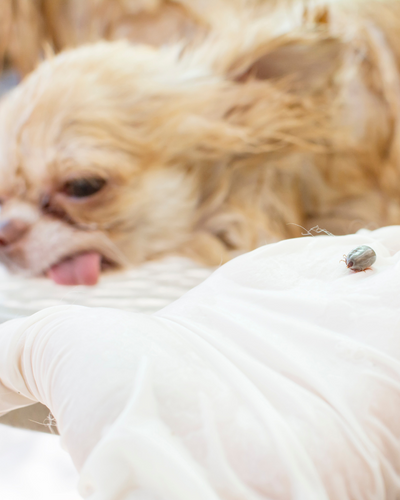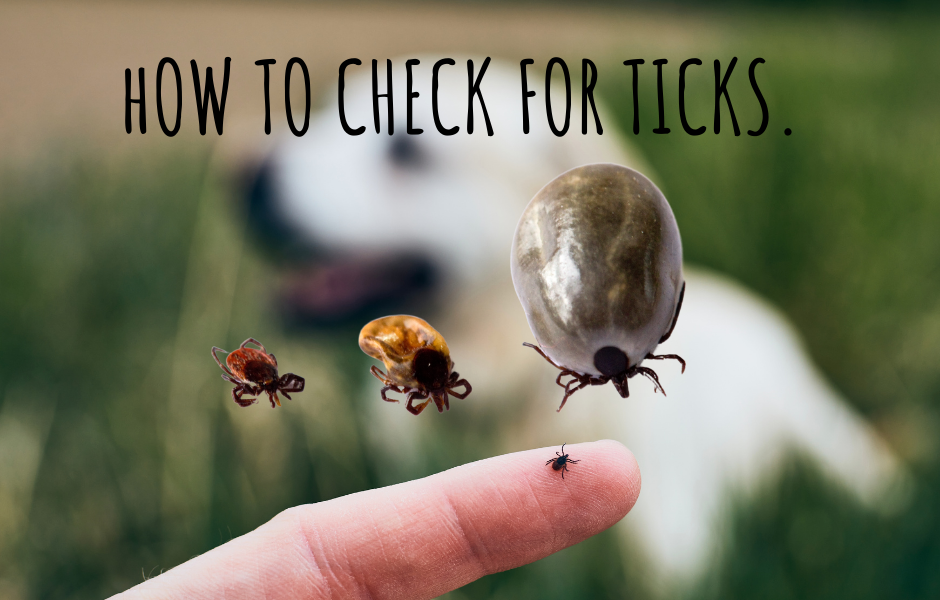Hey Dr Evan here!
Today we’re going to talk about Ticks. Those most terrifying of parasites everybody is seen on the news or has a friend with a horrible story
So what are ticks?
Ticks are insects, look a bit like a small spider with 8 legs, are generally brown/tan in colour and range from 1mm to 1cm in size. There are about 70 different species of ticks in Australia and they are especially common along the east coast. Some have a flat body and a long mouth, while some look wrinkly and leathery.
Tick borne diseases
Most species of ticks in Australia are relatively harmless, however many people are allergic to tick bites.
It is also possible for ticks to pass on several diseases to humans (especially children) such as Lyme disease, Tick typhus, Q-fever, Babesiosis, Flinders Island spotted fever or Rickettsia.

Despite these threats, our knowledge of Australian ticks and tick-borne diseases is actually in its infancy.
Paralysis tick
Even though there are many species, Australia has (as it always does) one particular species of tick that is 100 times worse than any of the others.
The paralysis tick, Ixodes holocyclus, is a species of tick that lives on the East Coast of Australia, from the tip of North Qld all the way down around to Geelong. Side note – These paralysis tick maps you find on Google are actually very old, very outdated and in no way correct. Now, thanks to climate change and urban spread, paralysis ticks have even been found affecting dogs ,cats and kids in Tasmania. As the name states, this species of tick secretes a toxin in its saliva that causes muscle paralysis in mammals which can lead to respiratory arrest and eventually, death.
They grow from an egg to a larva (about 1mm long and brown) and then to a nymph (about 2mm long and pale brown). They also don’t fly or jump but crawl up grass or twigs then drop onto passing animals or humans, attaching themselves to the soft skin to feed on blood to grow. Once they have attached, they inject a chemical to stop the blood clotting so they can feed for days.
What are the signs of Paralysis Tick envenomation?
First of all, if you think your pet has been bitten by a paralysis tick you should take it to the vet immediately. The venom’s effect starts at the base of the spine and works its way up, so the back legs and tail are generally affected first and it progresses to the front legs. Your pet may also show signs of incoordination (“looking drunk”), reluctance to do normal exercise, inappetence, vomiting or regurgitation, excessive drooling and dilated pupils. This can rapidly progress to complete paralysis, the inability to breath and eventually death. Clinical signs of disease are usually seen around three days after attachment but can show up just hours after being bitten. Especially if your pup or kitty is small.

One of the first things an owner will notice is a change to their pet’s vocalisation (meow or bark), especially in dogs. The tick’s venom generally affects the vocal chords which can make the pet “sound funny” (kinda like when your voice broke as you were growing up). Another tell-tale sign (no pun intended) is a limp or lax tail. If you notice any of these signs in your pet, it’s best to get them to a vet immediately to have a thorough check and to maybe administer antiserum.
What can I do to reduce risk?
Two things that I think are really important to talk about. One, not everybody lives in a paralysis tick zone and has to have tick protection and even those on preventatives should still check their dog or cat for ticks daily, especially if they are outside pets. Don’t worry though, a tick check is very simple, only takes about 1 minute and you don’t need any special devices to find them. It’s basically a glorified pat so your pet will generally be happy to oblige.
When your pet has returned from a walk or simply been outside, is the best time to check them over. It’s best to start at one end and work your way down so you don’t miss anything. Simply running your hands all over your pet (the glorified pat) and feeling for any small lumps or bumps is the easiest way to start. Ticks tend to be found around the head, neck, ears, underarms, groin and feet. These places are generally a little damper and warmer so ticks love them. Make sure you check inside the ears as well as between the toes. Daily grooming with a good brush can also help to remove any ticks from your pet’s fur as well.
By following these simple steps you can have your dog or cat live happier, healthier lives. All day, every day!
One way for you to protect your pet is to make sure they are treated all year round. FleaMail will help you to keep up to date on your pets treatments each month with zero hassle. Get FleaMail today! Click the link below for more!


